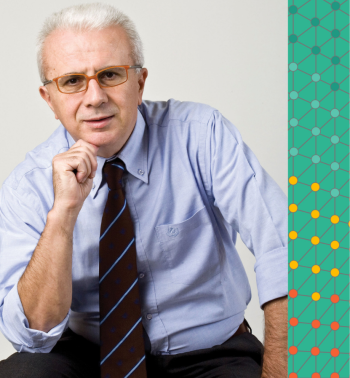
Adriano Castagnone
ASSOBIM
Adriano Castagnone, graduated in civil engineering, can be considered a pioneer of the use of IT solutions for structural engineering, dealing with the implementation of the Technical Standards for Construction and BIM processes. In 1983 he founded S.T.A. DATA, a consulting company in the sector of civil engineering and related IT solutions. Between 2007 and 2017 he was the president of AIST (Associazione Italiana Software Tecnico), and now is the president of ASSOBIM (Associazione del Building Information Modeling in Italia | ASSOBIM, n.d.), the first Italian association dedicated to all BIM operators. ASSOBIM was founded in 2017 with the aim to represent the entire “technological” supply chain of Building Information Modelling and promote the digitalization of the building sector.
Italian BIM decrees set deadlines for the mandatory use of BIM in public works, what are the actions that can boost its use also in the private sector?
Our latest BIM Report 2021 (BIM Report 2021 – ASSOBIM, n.d.) recorded a growth in BIM skills by professionals and companies, as well as the use of this methodology in an increasing number of projects. The growth of knowledge, skills and use is matched by data on the level of awareness on the benefits of adopting the BIM methodology. The 86% of the sample that participated in our annual survey – 6% more than in 2020 – believes that the adoption of BIM is able to strongly contribute to the reduction (up to one third) of the initial construction costs and the costs related to the entire life cycle of the building, as well as the reduction (up to 50%) of the total construction time. Based on these results and other positive signals, it is clear the awareness of the strategic role that BIM is increasingly gaining, even in the private sector.
BIM aims to guarantee interoperability among the actors of the construction process, how can BIM be promoted at all stages and among all the stakeholders?
Our association is committed to promoting digitization and BIM in the construction sector, representing the entire supply chain, from software houses to companies providing BIM services, from large contractors to engineering companies, also involving materials and components manufacturers. ASSOBIM aims to be the reference association in dialogue with institutions.
Digital platforms are important, but it is essential that they are interoperable and synchronized with each other to avoid the so-called “silos” effect at the information level, that causes data exchange issues, duplication, and
inconsistencies. For this reason, ASSOBIM is among the entities that called for a national digital platform of construction, proposing to adopt the project DigiPLACE (DigiPLACE – Towards a European digital platform for construction, n.d.) to the Ministry of Economic Development and then the Ministry of Infrastructure. This would allow all actors to transform their approaches, methods and processes, to cope with the changes of our times and start a real digital transition of the entire sector.
What are the main benefits and challenges of using BIM in renovation and efficiency projects? What are the most important steps?
Regarding the existing building stock and renovation projects, the Digital Twin concept definitely represents the current progress of IT in the construction industry. In fact, any built element (from a single block to the entire city) could be represented by its Digital Twin, not only in its geometry but collecting a potentially infinite amount and type of information; this is one of the main points of contact with the BIM methodology.
The BIM model of an existing building can be obtained through digital techniques based on laser scanning and point clouds. It collects all the information necessary for the management and maintenance of the asset itself and is integrated and constantly updated by real-time measurements to detect the current status, the operating conditions, any anomalies and potential risk situations, providing guidance for maintenance and efficiency. BIM and sustainability can be linked in view of a reduction of buildings environmental impact and in terms of energy efficiency. For example, energy parameters can be linked to the Digital Twin in order to monitor energy consumption and costs, and consequently define the actions to optimize them.
Among the activities carried out by ASSOBIM, did you support any renovation project particularly innovative for the challenge posed and the BIM solution implemented?
We are committed to spreading the culture of BIM and digitalization in the construction industry. For example, the dissemination project “THINK BIM” provides useful information to define guidelines and best practices to the construction industry. It is a program of free webinars on some of the most important issues and operational processes for the implementation of BIM; it is intended to propose to professionals, companies, manufacturers and public and private entities, new approaches, examples and proposals to stimulate the digital transformation of the sector, that historically is among the less digitalized industries.
Building stock is more and more digitalized, what do you think would be the main gain of having a digital model prior to the renovation?
Digital Twins are structured to provide real-time analysis and intervention tools with several advantages: the digital twin of a building can provide information on the status of the building and plant subsystems, on how they affect and are affected by users’ behaviour, on their efficiency and any changes caused by use and time. The BIM model is the database necessary for the development of a Digital Twin; the latter is able to perform additional functions thanks to integration with other technologies that allow the connection with the building itself. The design and construction phases of a renovation project are the ideal time for the collection of all the data necessary for the construction of a virtual replica of the asset within the BIM process.
